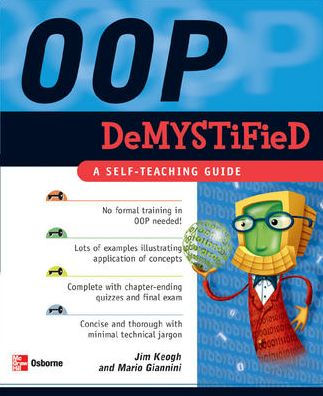5
1
9780072253634



OOP Demystified: A Self-Teaching Guide / Edition 1 available in Paperback

OOP Demystified: A Self-Teaching Guide / Edition 1
- ISBN-10:
- 0072253630
- ISBN-13:
- 9780072253634
- Pub. Date:
- 03/08/2004
- Publisher:
- McGraw Hill LLC
- ISBN-10:
- 0072253630
- ISBN-13:
- 9780072253634
- Pub. Date:
- 03/08/2004
- Publisher:
- McGraw Hill LLC

OOP Demystified: A Self-Teaching Guide / Edition 1
$31.0
31.0
In Stock

Product Details
| ISBN-13: | 9780072253634 |
|---|---|
| Publisher: | McGraw Hill LLC |
| Publication date: | 03/08/2004 |
| Series: | Demystified |
| Pages: | 288 |
| Product dimensions: | 7.00(w) x 9.00(h) x 1.00(d) |
About the Author
From the B&N Reads Blog



